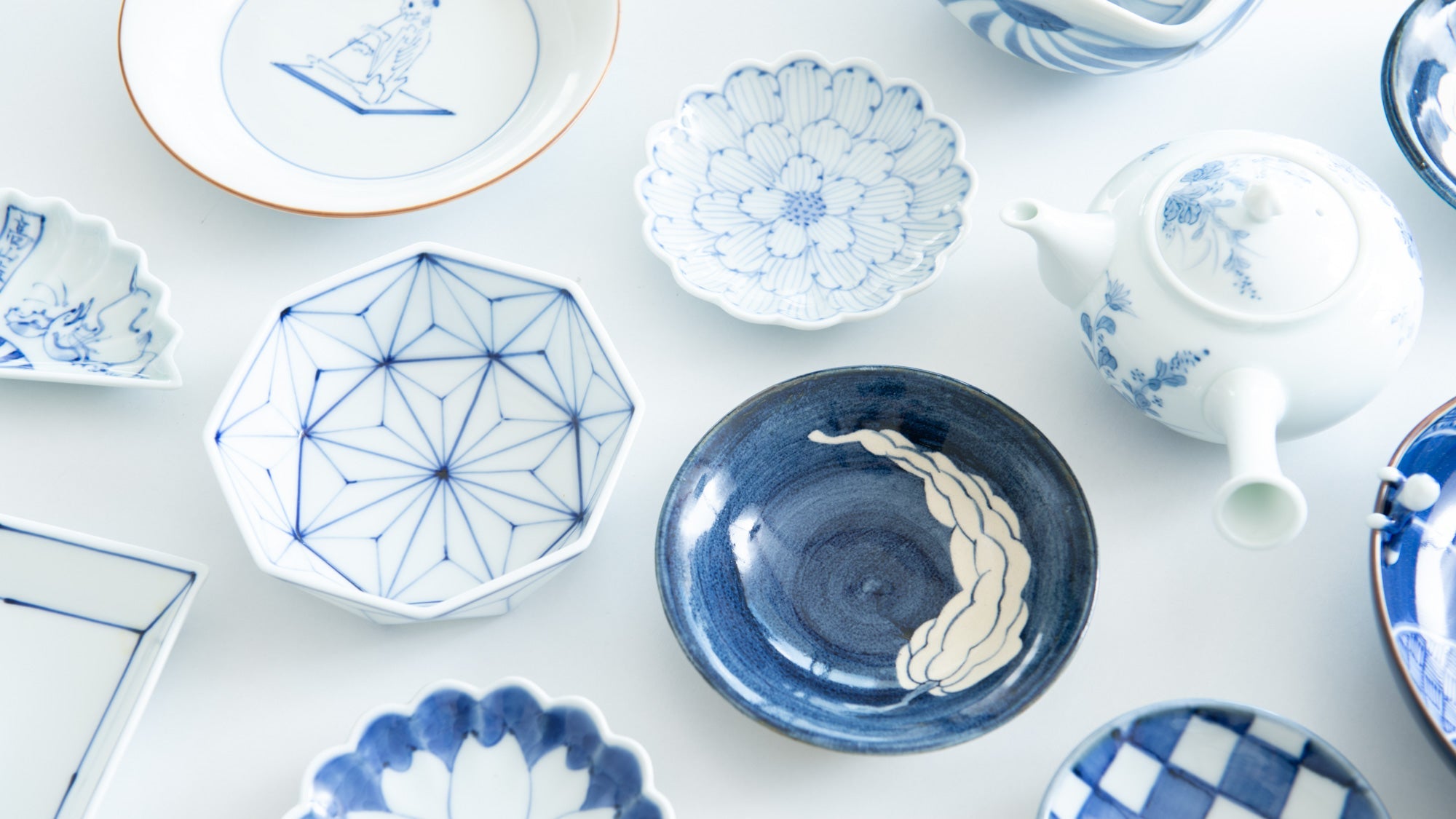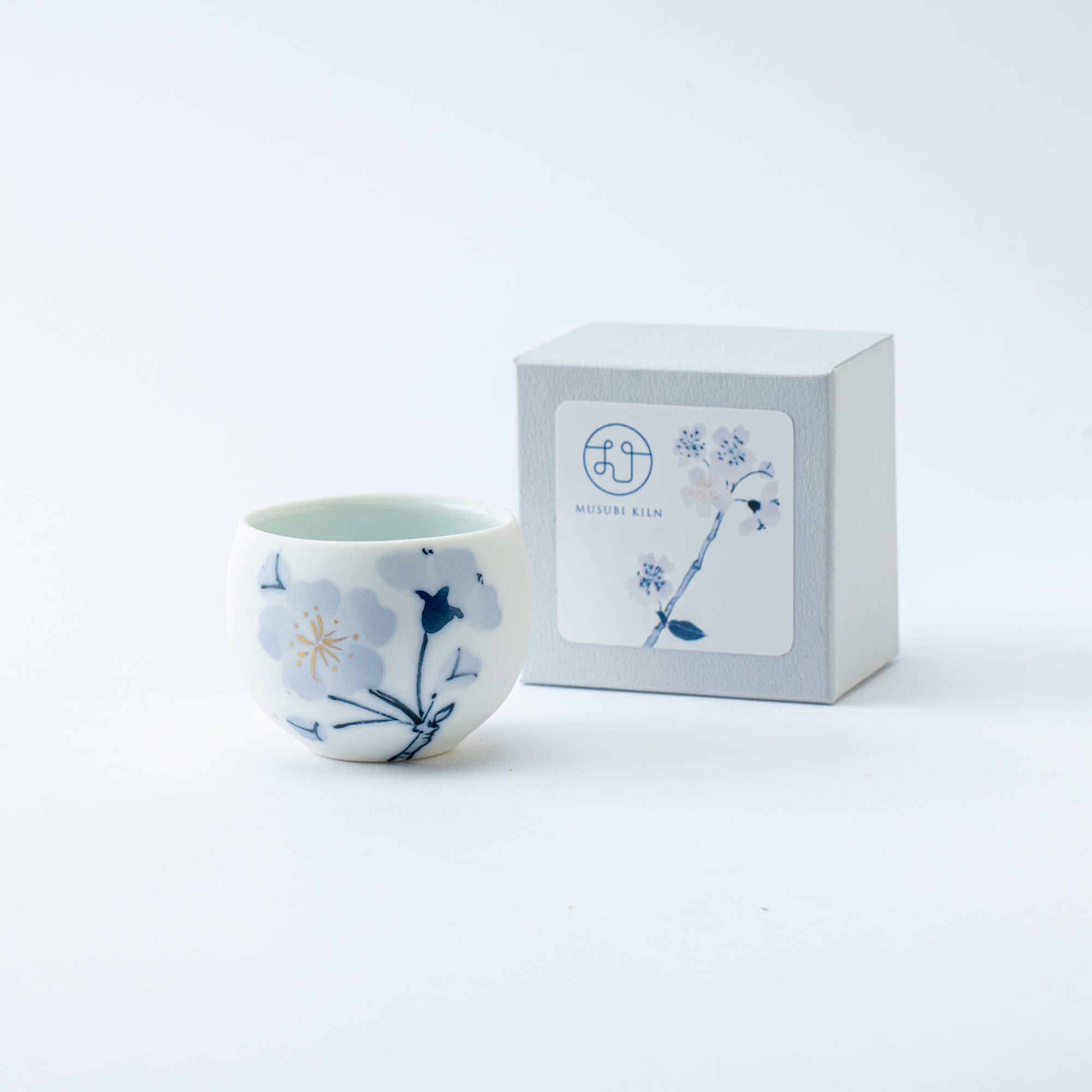
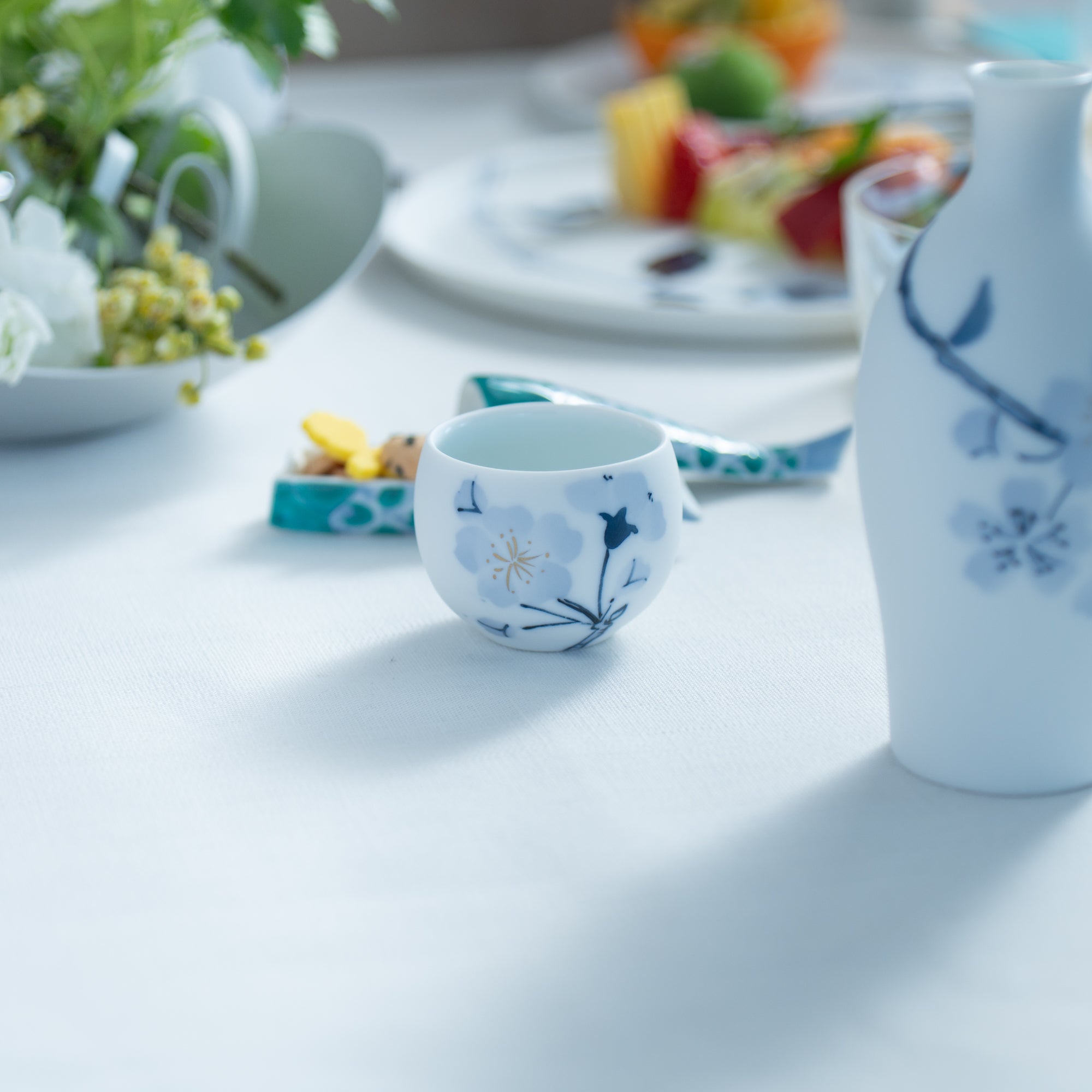
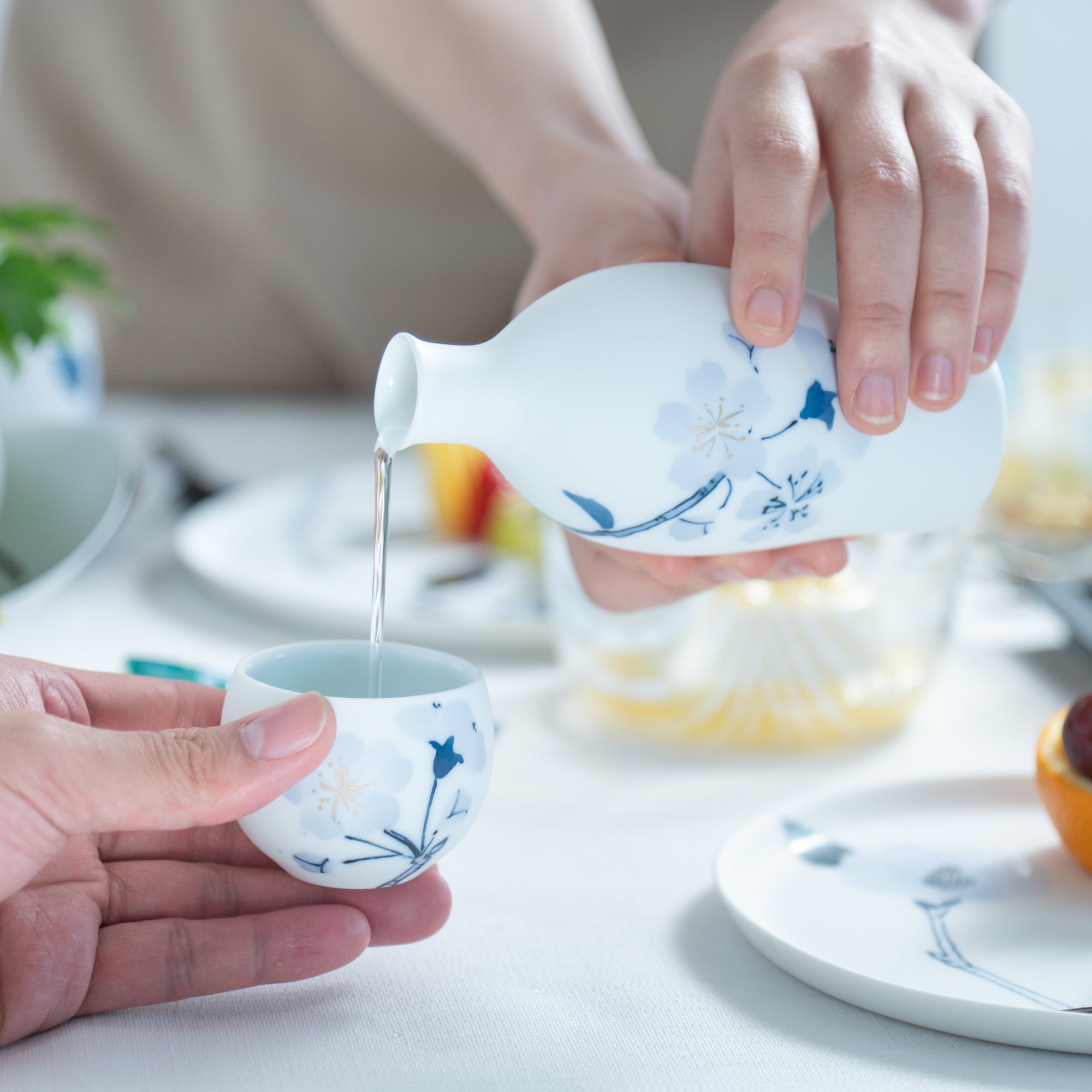
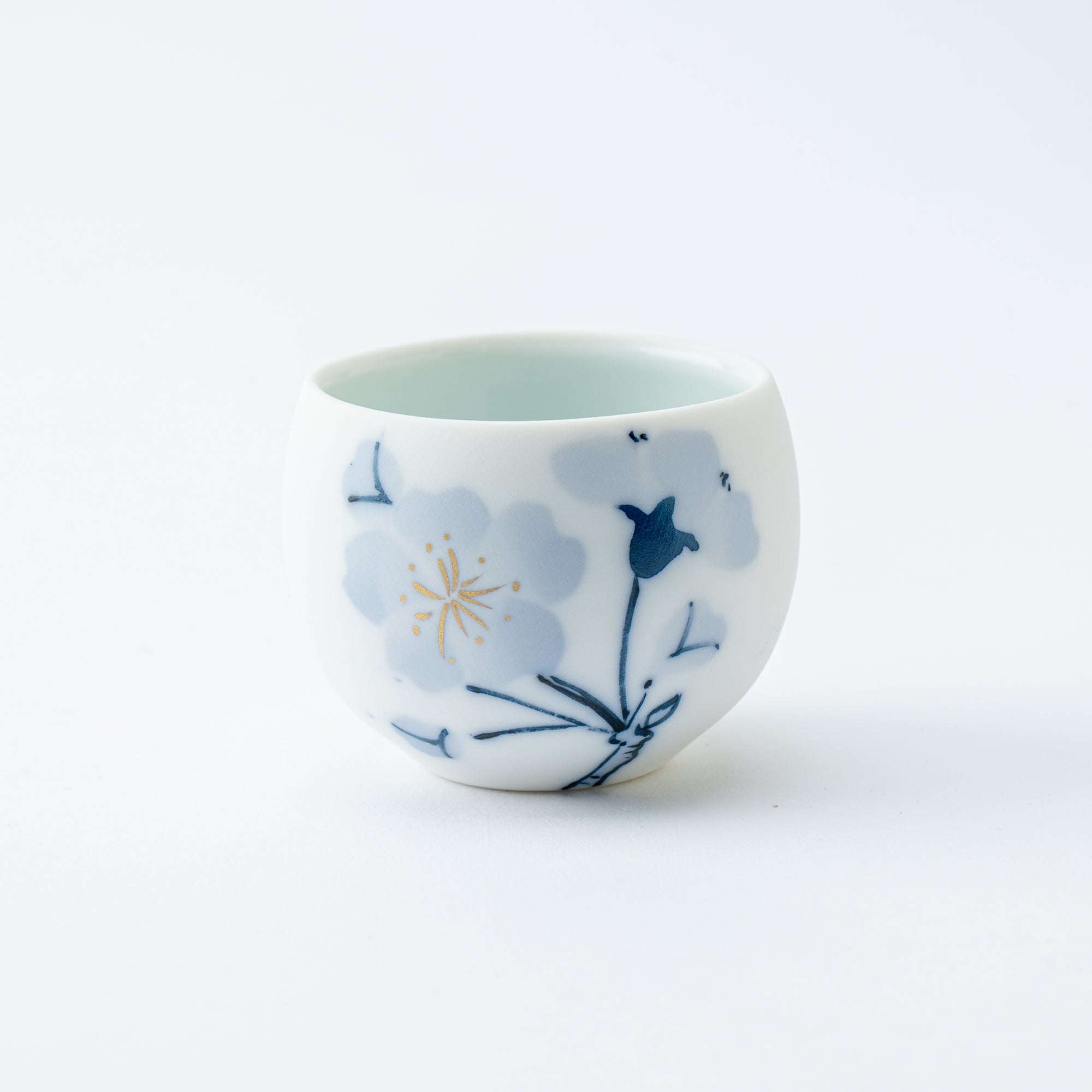
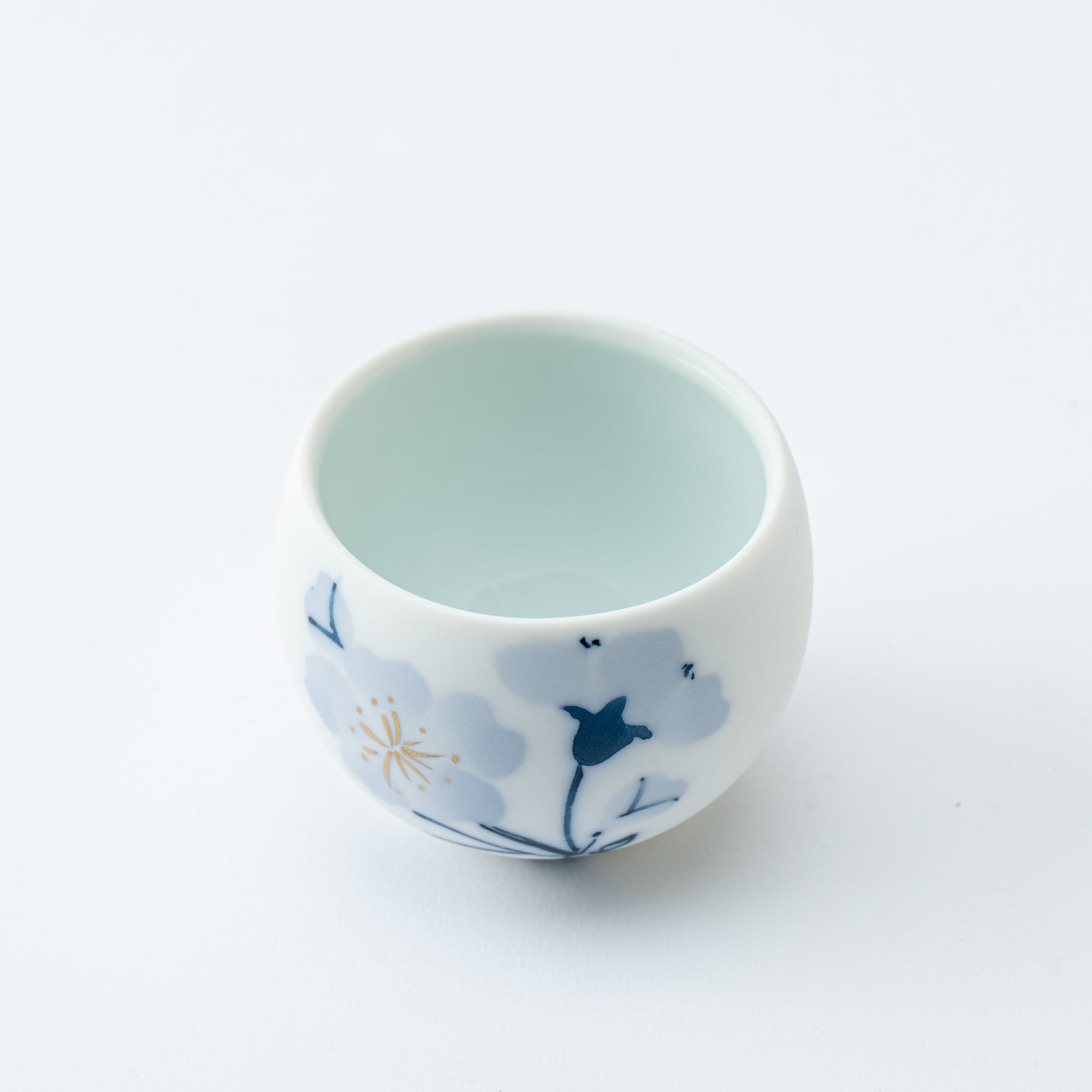
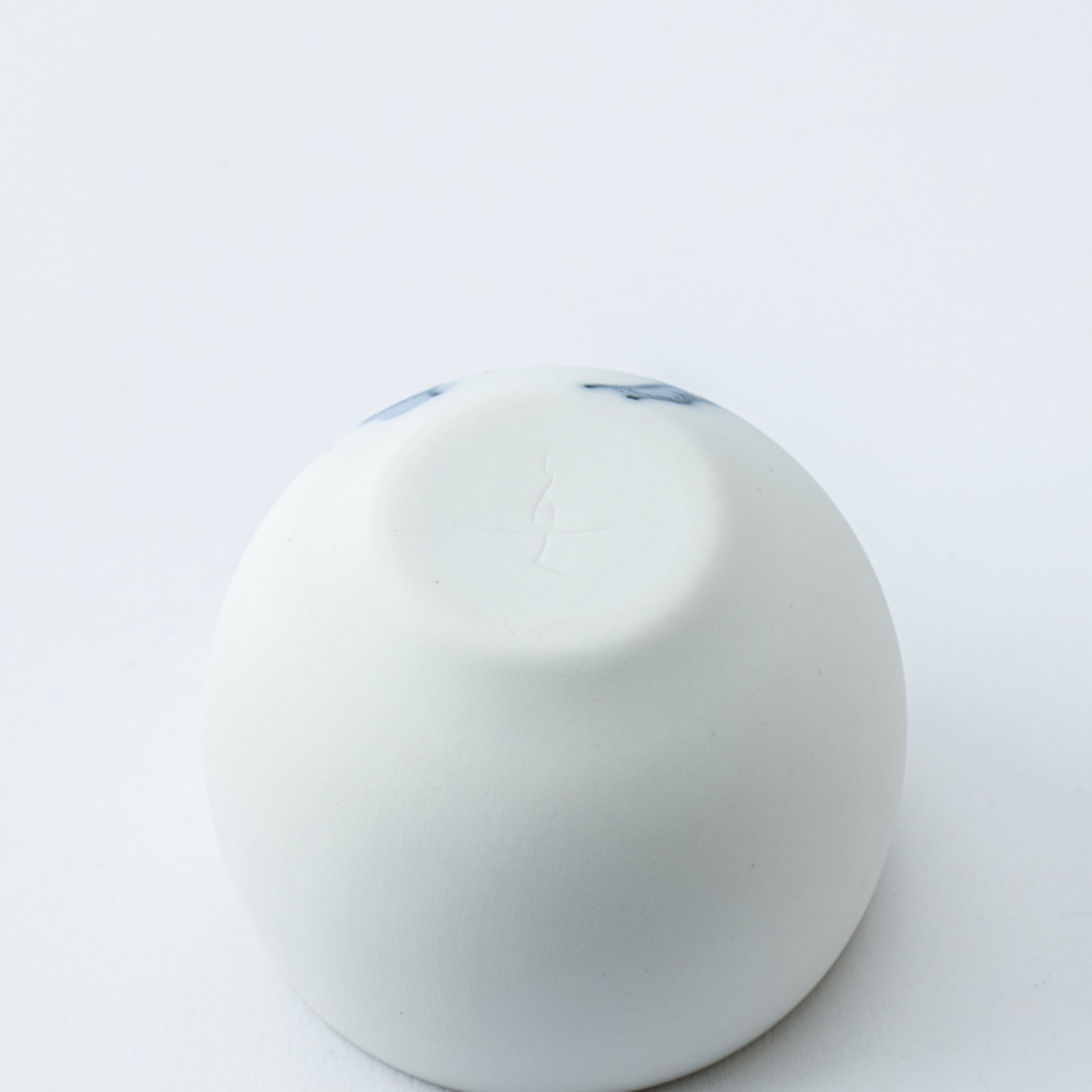
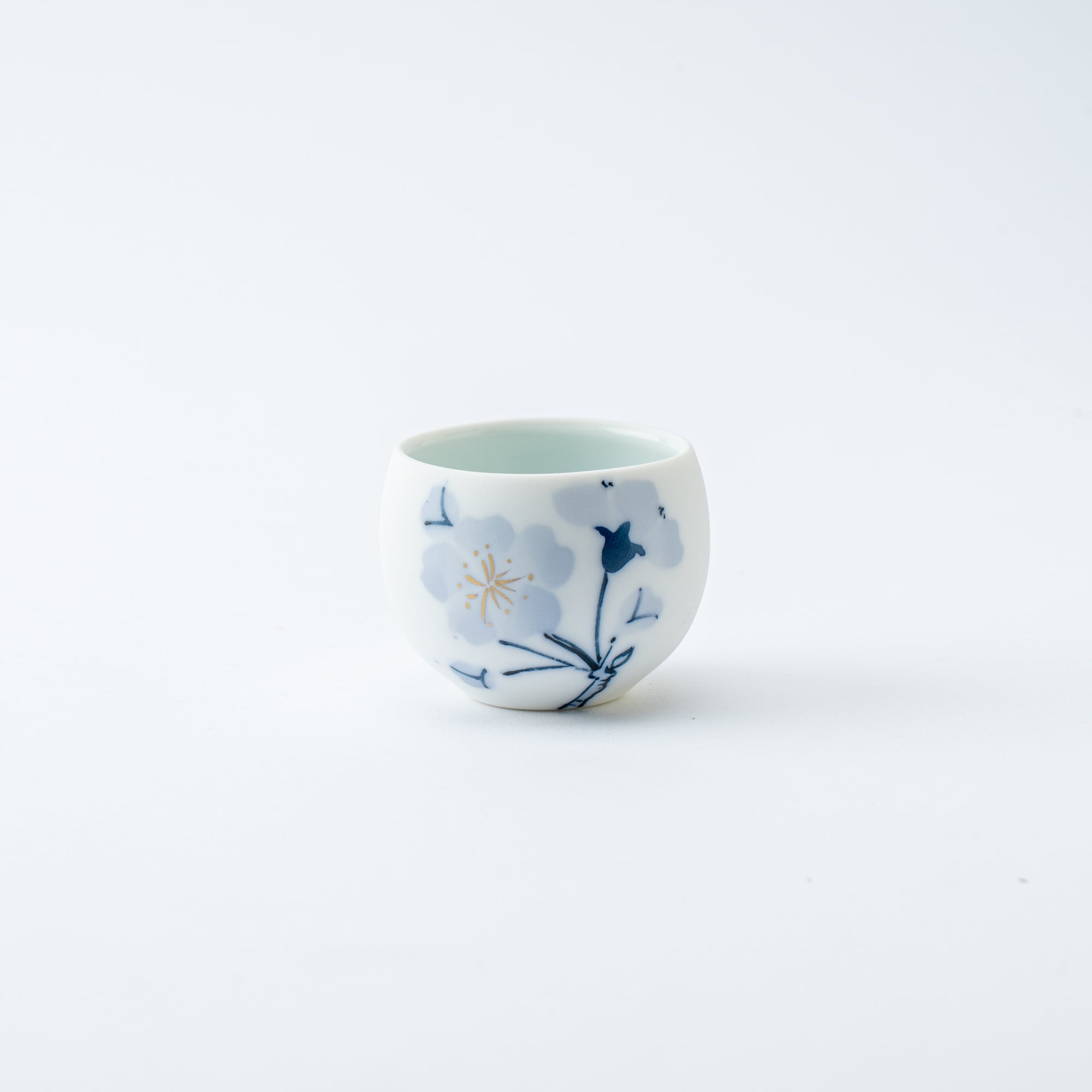
Blau Blume Sakura Guinomi Sake-Becher
Estimated Shipping Widget will be displayed here!
Bringen Sie die Schönheit der Sakura in Ihre Sake-Momente mit diesem Porzellan guinomi Sake-Becher, verziert in Seto Sometsuke– der ikonische blau-weiße Stil. Ein einzelner Zweig Kirschblüten schmiegt sich sanft um die Oberfläche, wobei sich blasse Blütenblätter neben einem Hauch von Gold und tiefem Kobalt entfalten, ein originelles Design für Musubi KilnDie abgerundete Form liegt natürlich in der Hand und bietet bei jedem Schluck eine ruhige Eleganz.
Das Blumenmotiv ist handgemalt mit gosu, ein traditionelles Kobaltpigment, das mit einem dicken Pinsel aufgetragen wird. Diese Technik erzeugt weiche Farbverläufe, die an die zarte Schichtung von Sakura-Blütenblättern erinnern. Die Innenseite ist mit einer glatten, glänzenden Glasur versehen, die für ein angenehmes Mundgefühl sorgt, während die dezent matte Außenseite den raffinierten, haptischen Charme unterstreicht.
Wunderschön verpackt in einer passenden Schachtel mit demselben Sakura-Motiv ist dieser Guinomi ein aufmerksames Geschenk oder eine anmutige Ergänzung Ihrer Sake-Rituale.
EINZELHEITEN
| Quantity | 1 |
| Size | D 5.0 cm (2.0 in) x H 4.5 cm (1.8 in) |
| Capacity | 50 ml (1.7 fl oz) |
| Weight | 60 g (2.1 oz) |
| Material | Porcelain |
| Package Type | Paper box |
| Microwave | No |
| Dishwasher | No |
Hersteller / Marke
SINGAMA wurde 1919 gegründet und ist ein familiengeführtes Töpferstudio in Shinano, einer kleinen Stadt in den nordöstlichen Hügeln der Stadt Seto in der Präfektur Aichi. Das Studio verwendet hochwertigen lokalen Ton und ist spezialisiert auf Seto Sometsuke– weißes Porzellan mit sanften, indigoblauen Mustern. Jedes Stück ist handbemalt und strahlt mit seinen sanften Formen und der Wärme, die es auf dem alltäglichen Tisch ausstrahlt, Behaglichkeit aus.
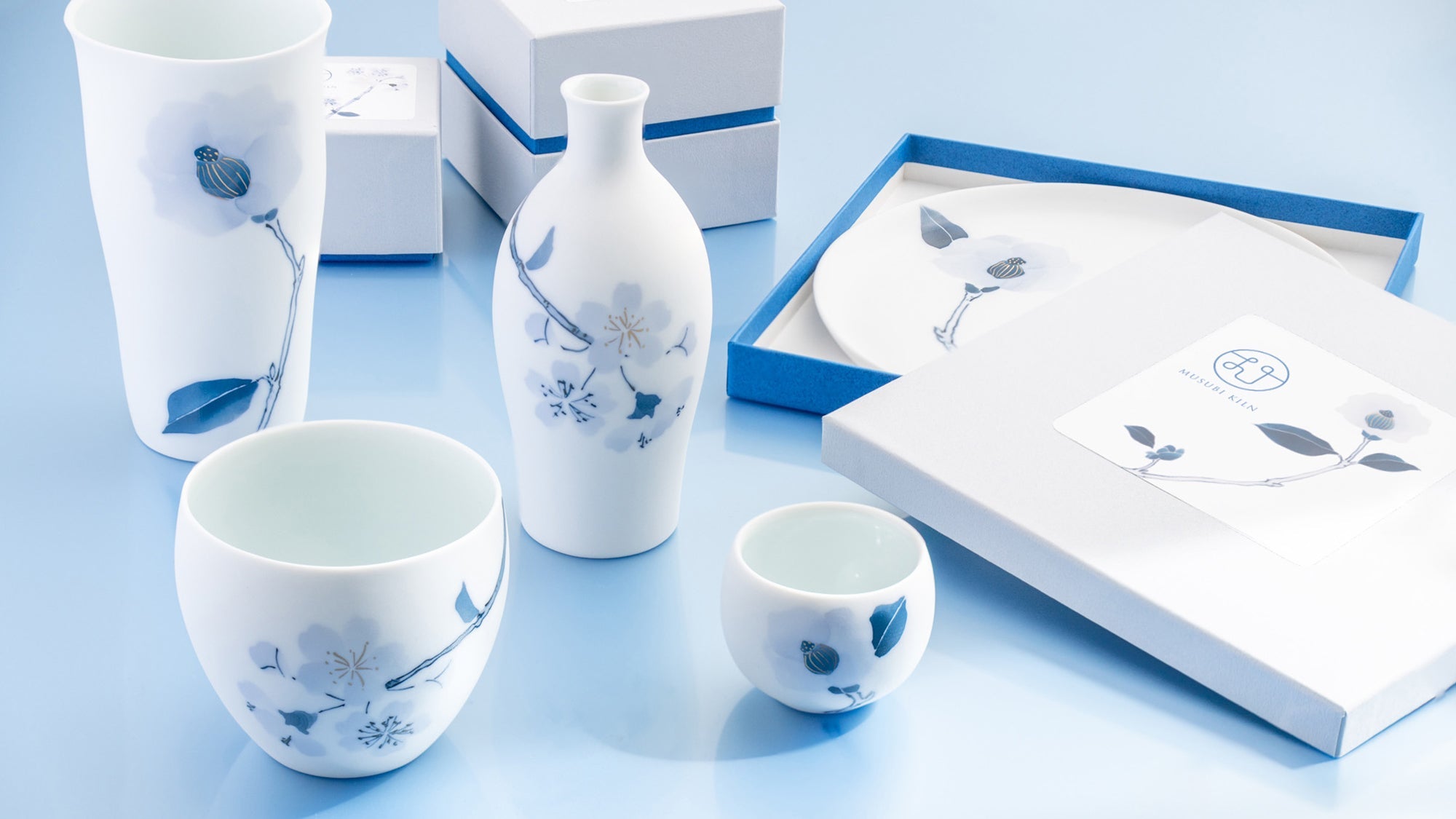
Kunsthandwerk
Seto-Ware wird in und um Seto City in der Präfektur Aichi hergestellt und umfasst eine breite Palette an Keramiken, die Jahrhunderte der Handwerkskunst und Innovation widerspiegeln. Als einer der sechs alten Brennöfen (Rokkoyo) Japans nimmt die Region Seto einen herausragenden Platz im keramischen Erbe des Landes ein. Sie war auch ein Pionier in der Massenproduktion von Porzellan, und ihre weite Verbreitung führte zum Wort setomono– ein Begriff, der auch heute noch allgemein für Keramik verwendet wird.
Seto ist eine der wenigen Regionen Japans, in der sowohl Steingut als auch Porzellan hergestellt werden und zeichnet sich durch eine bemerkenswerte stilistische Vielfalt aus. Von einfachem Alltagsgeschirr bis hin zu edleren Stücken prägt Seto-Keramik den Alltag mit Kreationen, die Tradition und Kreativität in Einklang bringen.
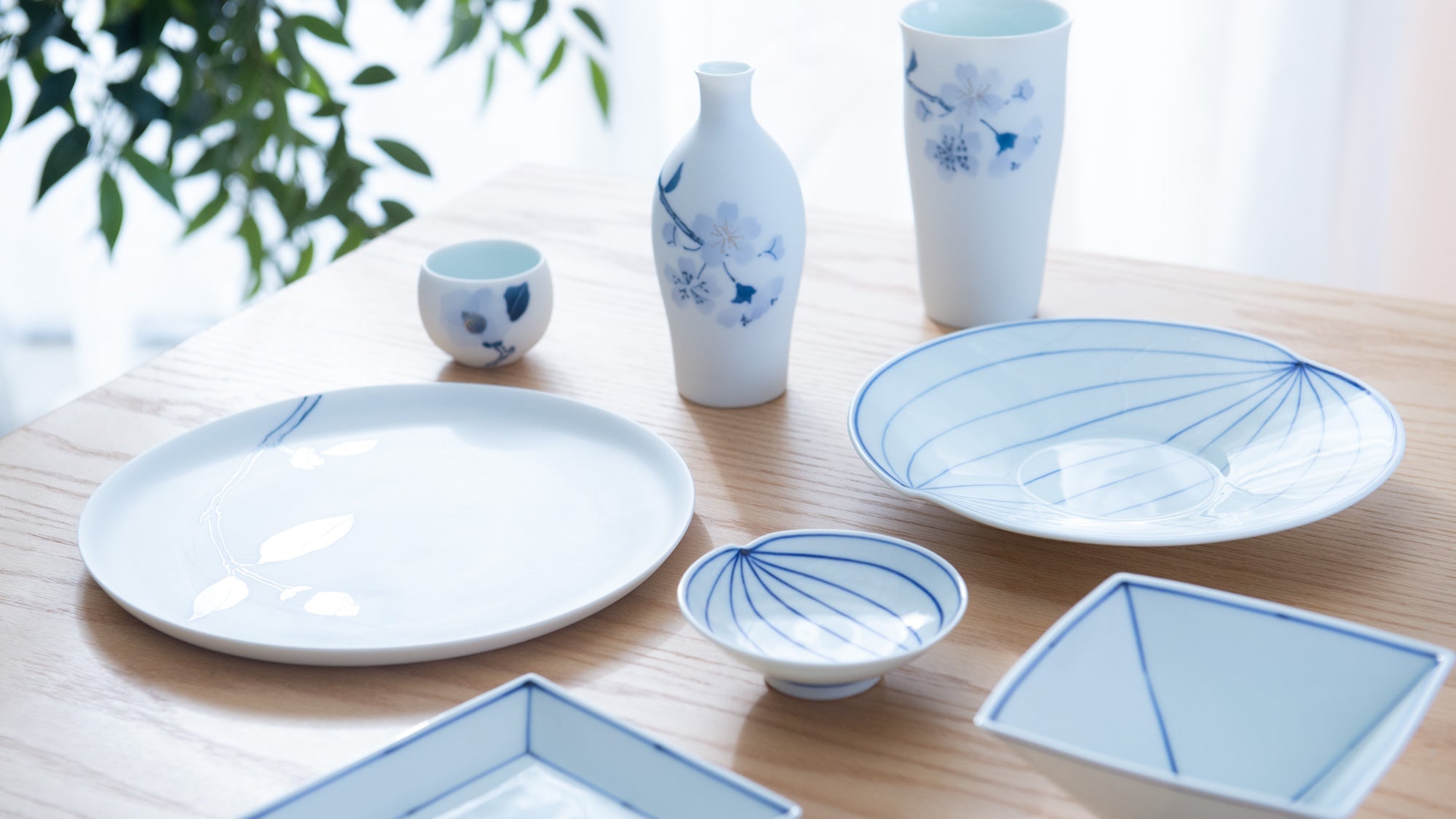
Anmerkungen
Optionen auswählen







Estimated Shipping Widget will be displayed here!
Sake-Becher
Entdecken Sie eine erlesene Auswahl an Sake-Bechern, die von Japans erfahrenen Kunsthandwerkern gefertigt wurden. Von traditionell ochoko Von modernen Designs bis hin zu modernem Design spiegelt jedes Stück die Kunstfertigkeit und Tradition japanischer Handwerkskunst wider. Diese Tassen eignen sich perfekt für ruhige Momente und festliche Toasts und verleihen Ihrem Sake-Erlebnis Eleganz.

Sometsuke
Sometsuke ist eine dekorative japanische Töpfertechnik, auch bekannt als blau-weiße Keramik. Dieser klassische Stil wird weltweit für seine Eleganz geschätzt. Wir bieten eine große Auswahl an blau-weißen Tellern, Schüsseln, Trinkgeschirr und vielem mehr.
Die optisch ansprechende Farbgebung aus kobaltblauem und weißem Porzellan von Sometsuke bringt die Schönheit von Speisen zur Geltung und lässt sich problemlos mit einer Vielzahl von Geschirr kombinieren. Die feine, glatte Oberfläche und das leichte Tragegefühl sorgen für ein noch angenehmeres Benutzererlebnis.
